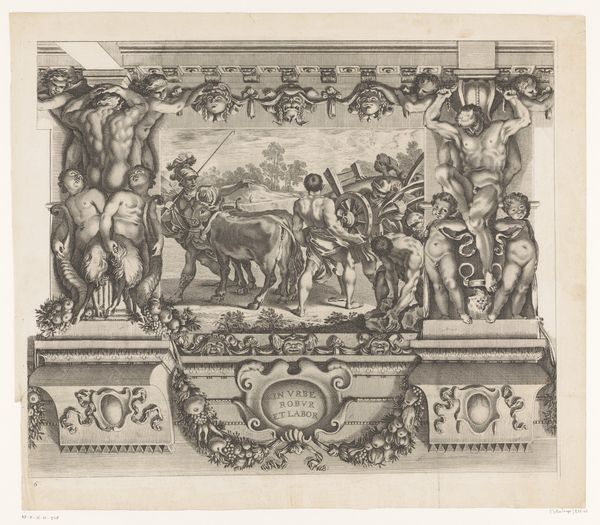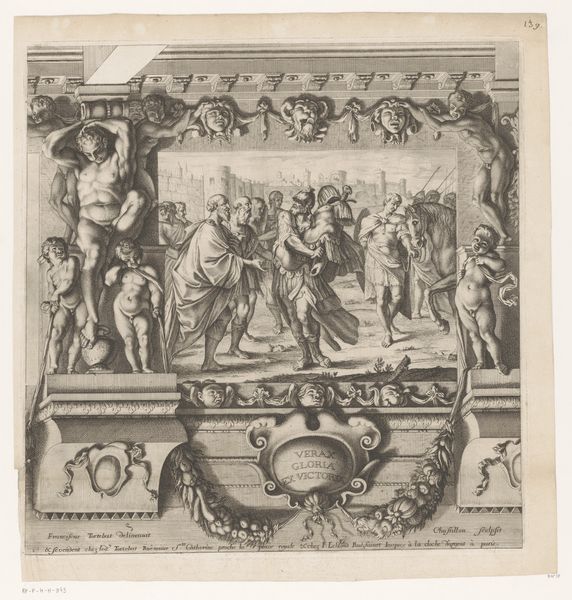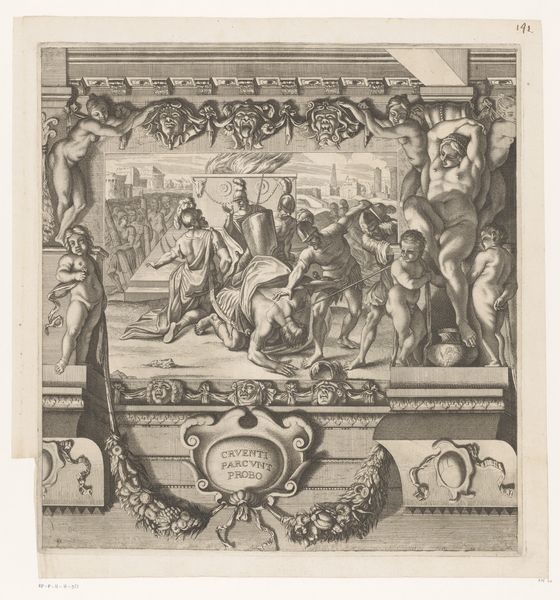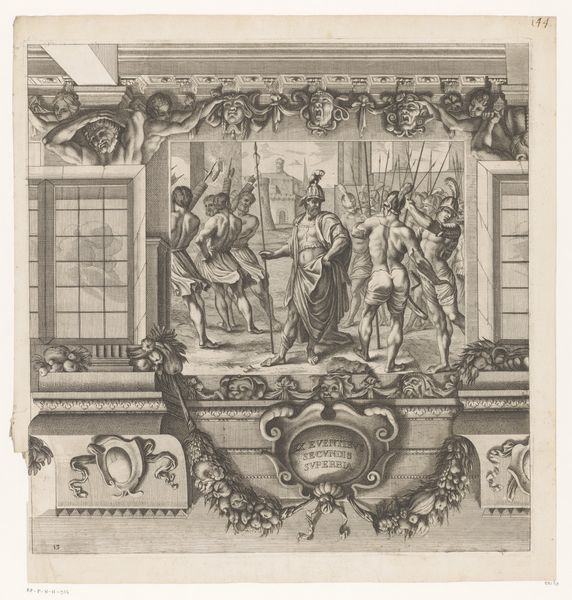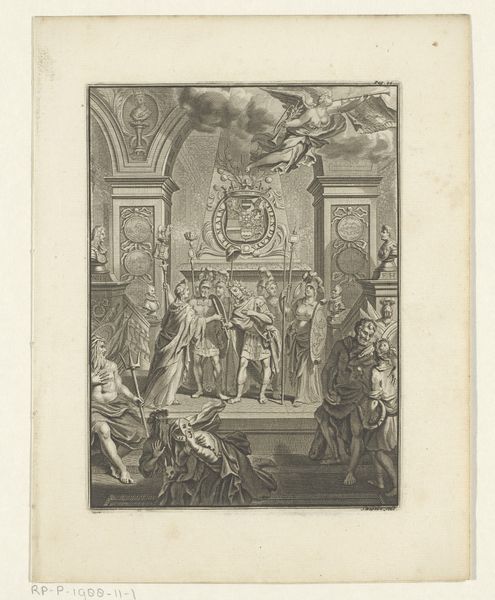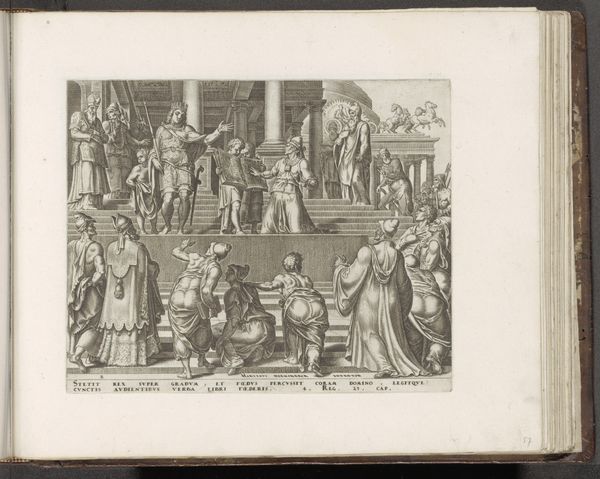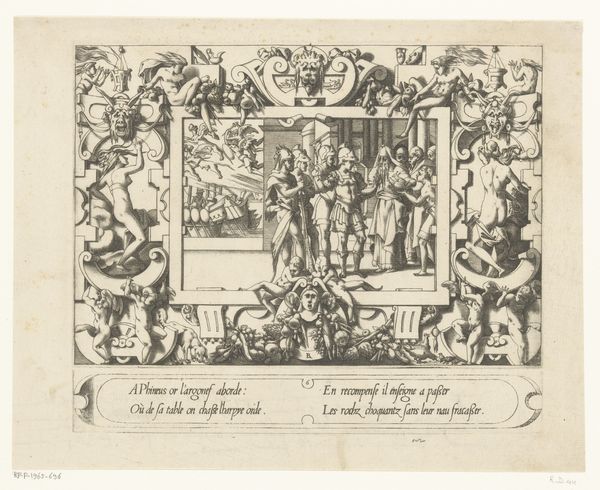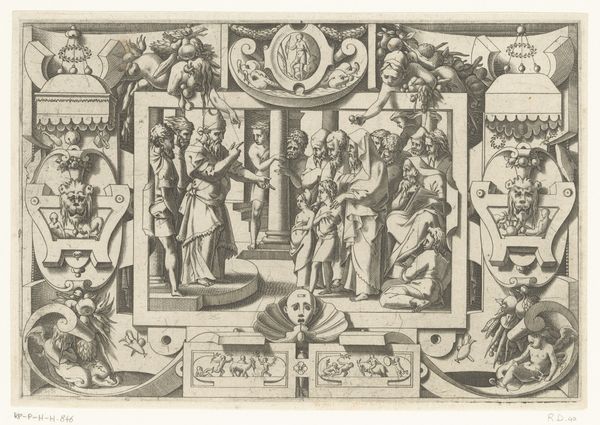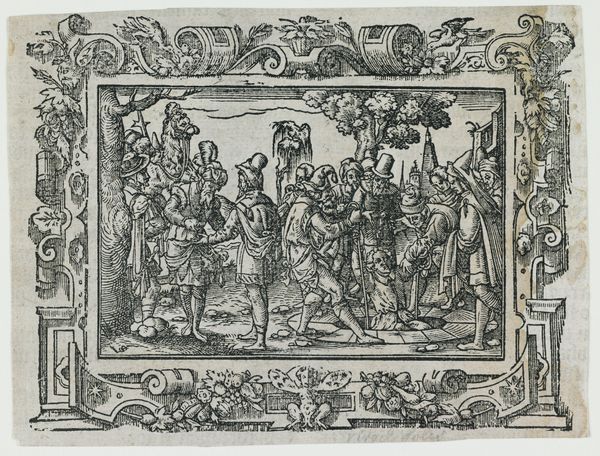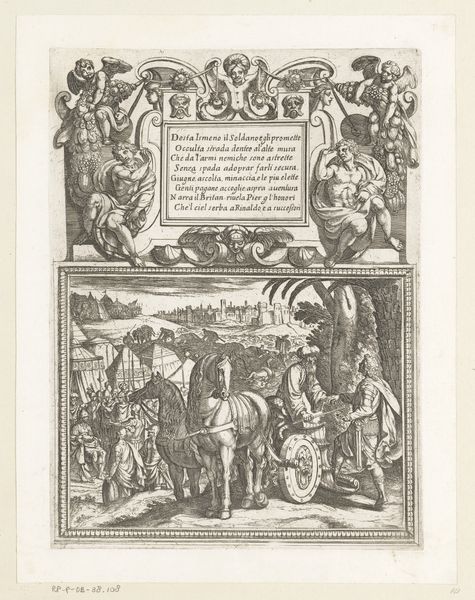
print, engraving
# print
#
figuration
#
form
#
line
#
history-painting
#
academic-art
#
engraving
Dimensions: height 457 mm, width 465 mm
Copyright: Rijks Museum: Open Domain
Curator: This engraving from 1659 by Louis de Châtillon depicts the moment Remus is brought before King Amulius. It's part of a series illustrating scenes from Roman history. Editor: The scene is teeming with tension. The almost theatrical composition directs the viewer's eyes through a clear, dynamic narrative arc—a captive brought before an unimpressed ruler. The ornamental border only heightens the drama. Curator: Indeed, and consider the engraving itself. The labour! Look at the line work, so precise. Think about the materials: the paper, the ink, the tools necessary to create such detail in a repeatable format. This speaks volumes about the distribution of knowledge and power at the time. It would have been a privilege to own this. Editor: Absolutely, and within that distribution, notice how power is communicated through symbolism. Amulius, enthroned, dominating the visual space; Remus, bound and presented as a spectacle. It's all about establishing authority, connecting to a perceived glorious past. The very inscription “Vinctus Sed Invictus,” or "Chained but Unconquered," below reinforces a mythology of strength under duress. Curator: Myth is right. But I keep thinking of the workshop, the conditions under which de Châtillon labored. What was his social standing? Was this piece commissioned? And, what type of paper was he able to secure? These material conditions determined the art we now see on display. Editor: It's also compelling to consider the longevity of these symbols. Think of the recurring image of a ruler on a throne, of captives paraded—these motifs, charged with meaning, continue to appear across art forms and political rhetoric even today. They shape how we perceive power, resistance, and even justice. Curator: That said, the dissemination of this image was also crucial. Printmaking made art accessible to a broader audience, which undoubtedly helped the narrative take hold. And let's not forget the paper it was printed on—each sheet a product of labour, trade, and technological development. Editor: Precisely. It’s a rich layering of history, presented through enduring visual shorthand. Ultimately, this image isn't just a historical record; it's a mirror reflecting our own ongoing relationship with these themes of power, conflict, and identity. Curator: And the material reality of its making continues to shape that reflection. Fascinating. Editor: A rewarding experience.
Comments
No comments
Be the first to comment and join the conversation on the ultimate creative platform.
